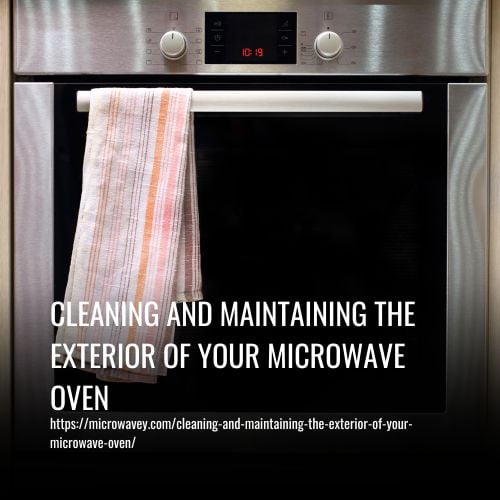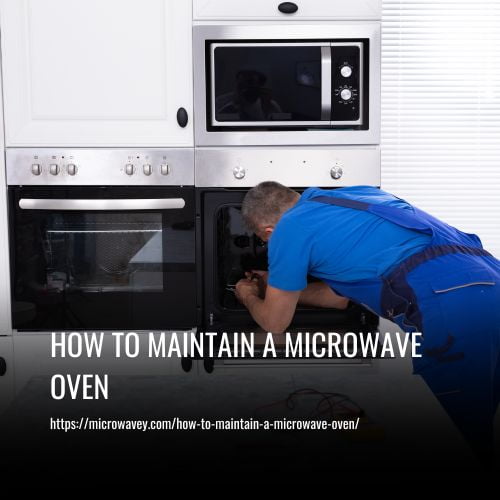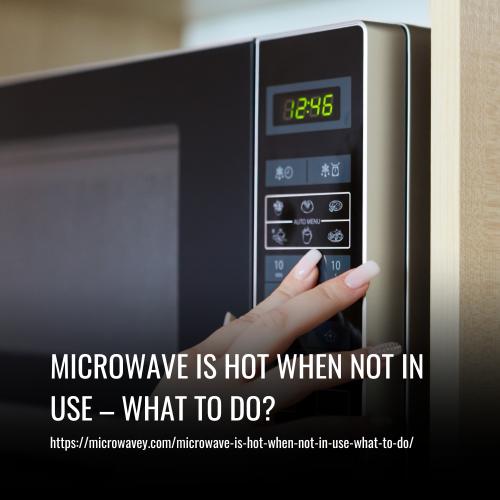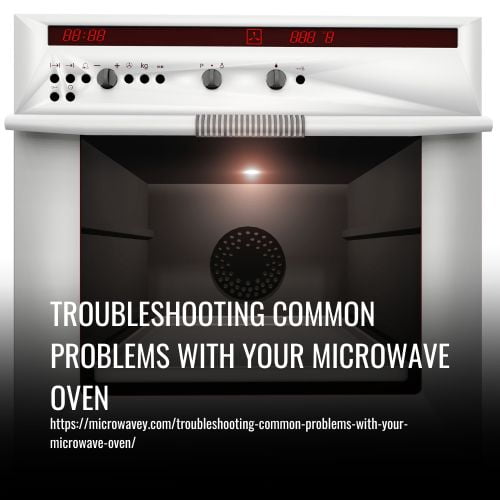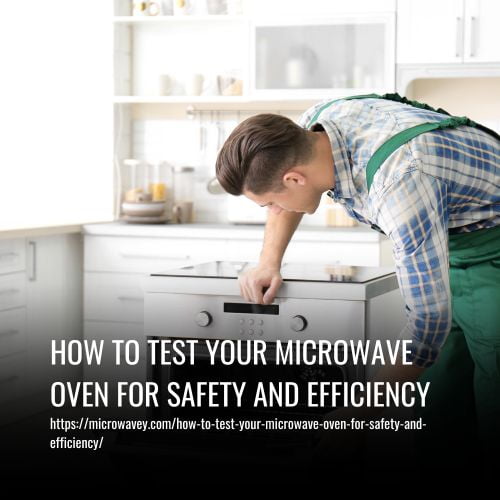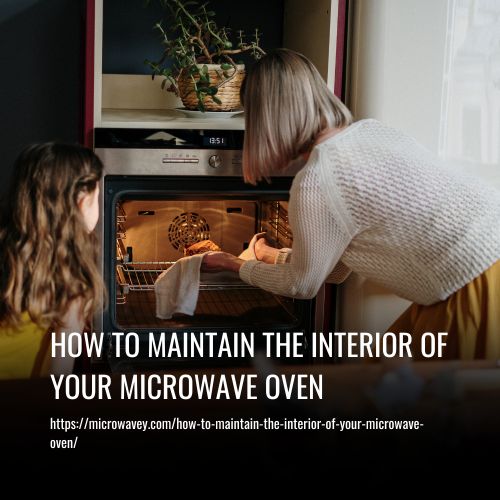What To Do If Your Microwave Oven Stops Working
Hey there! If you’re having trouble with your microwave oven, don’t worry – I’m here to help.
It can be pretty frustrating when something like this happens and it’s not always easy to know what the next step should be. In this article, I’ll walk you through some of the steps you can take if your microwave stops working.
First things first: before you do anything else, make sure that it really is broken. This may seem obvious but sometimes a simple thing like unplugging the power cord and plugging it back in again will solve the problem right away!
Once you’ve done that and still no luck, read on for more tips on how to get your microwave up an running again.

Unplug The Power Cord
They say the early bird catches the worm.
In this case, if your microwave isn’t working it’s best to act fast and diagnose the problem before it gets worse.
The first step is to unplug the power cord from both the wall socket and microwave oven.
Then check all of its wiring for any visible damage or loose connections.
After that, examine the control panel, looking out for any buttons not functioning as they should be or anything else out of place.
If everything looks normal then you may have a faulty part inside that needs replacing.
It might also be worth checking with your manufacturer warranty to see if repairs can be done under their coverage.
Don’t wait too long otherwise you risk making matters worse and having an even more expensive repair bill!
Check The Circuit Breaker
First off, let’s locate the circuit breaker. I’ll walk you through the process – it’s easy when you know what to look for. Next, let’s test the circuit breaker. I’ll need you to help me with this one – we’ll check the switch to make sure it’s in the right position. Lastly, if needed, we’ll reset the circuit breaker. This should only take a minute – just follow my instructions and you’ll be on your way.
Locating The Circuit Breaker
Hey everyone, let’s talk about checking the circuit breaker when your microwave oven stops working.
First off, you’ll want to locate it in order to examine any connections.
Once you’ve located it, check for a tripped switch or an issue with the wiring that may be preventing power from getting through.
If identifying issues isn’t something you’re comfortable doing yourself, call an appliance repair technician right away and they can help get things sorted out quickly!
Don’t wait too long -you don’t want to make matters worse!
Testing The Circuit Breaker
Now, let’s take a look at how to test the circuit breaker.
To start with, you’ll need to examine the fuses and inspect the wiring for any signs of damage or fraying.
If everything looks okay there, then it may be time to reset the switch in order to restore power.
This is usually done by simply flipping the switch off and on again – but make sure you do this carefully just in case!
It could solve your problem right away if all goes well.
If not, though, don’t hesitate to call me up for some professional help!
Resetting The Circuit Breaker
Now that we’ve gone over how to inspect the fuses and wiring, it’s time to move onto resetting the circuit breaker.
This is a straightforward process – all you have to do is flip the switch off and then back on again.
Just be sure to take proper safety precautions when connecting power connections in order for this step to go smoothly.
And if you’re still having trouble after doing this, don’t hesitate to give me call so I can help troubleshoot any further issues!
Inspect The Door
First, I’d check the ventilation of your microwave oven. Make sure that none of the vents are blocked or covered up; if they are, remove any obstruction and try using it again.
If there is still no response from your oven, examine the seals around its door to make sure they’re functioning properly. It could be that a seal has worn out over time, causing warm air to escape and prevent proper heating. In some cases, simply replacing this part can fix the problem entirely.
If not, then further investigation may be necessary.
Clean The Microwave
Now that you have inspected the door of your microwave oven, it’s time to move on to cleaning it.
Cleaning is an essential part of preventive maintenance and can help keep your appliance running smoothly for years.
Here are a few tips to get started:
- Start by removing any food particles or splatters from inside the microwave with a damp cloth.
- Wipe down all surfaces before scrubbing them with warm, soapy water.
- Avoid using abrasive cleaners as they can damage the finish of your microwave.
- Use a microfiber cloth for best results when wiping off excess moisture after cleaning.
It’s important to regularly clean your microwave in order to avoid any issues down the line that could be caused by dirt or grease build-up.
Keeping up with regular cleaning will ensure that your appliance runs optimally and prolong its life span.
Test The Door Switch
I’ll start by checking the connections – that’s usually where I find most of my problems.
First, I’ll examine any wiring for signs of damage or corrosion. If all looks good there, then I’ll go ahead and move on to testing the door switch itself.
To do this, I need to remove the outer casing from around the microwave oven and locate it manually.
Once located, I will test out its functionality using a multimeter. Depending on what I find here, I may have to replace the switch if it isn’t working properly.
All in all, this is an easy repair job!
Test The Microwave Turntable
Now that you’ve tested the door switch, it’s time to move on and test the microwave turntable.
If your oven has an internal turntable motor, then a good first step is to check the wiring of the power cord leading into the motor. Over time, these wires may get worn out from regular use or simply due to age so if any of them are in bad shape, they should be replaced with new ones.
If everything looks okay after checking for loose connections, then your next course of action would be to replace the capacitor as this will help restore power back to your appliance.
This part can easily be purchased online or at most home improvement stores and once installed correctly, you should see some improvements in how well your oven functions.
Inspect The Waveguide Cover
I’ll start by checking for blockages. That’s usually a common issue when microwaves stop working. Then I’ll take a look for any damage to the waveguide cover.
Check For Blockages
Hey there, as an appliance repair technician I’m here to help you figure out what to do if your microwave oven stops working.
One of the first things we should look at is the waveguide cover. The waveguide cover helps direct microwaves into the cooking chamber and can become blocked by food particles or dust over time.
To check this properly, make sure you inspect all vents and seals for blockages – use a cotton swab if necessary. If everything looks clear then it’s likely not the issue but if something looks off then it could be blocking your microwave from turning on correctly.
So don’t forget to thoroughly check those areas before moving on!
Check For Damage
Now that we’ve looked at the waveguide cover, let’s move on to checking for any damage.
Start by taking a look around the outside of your microwave oven and check all connections and wires for signs of wear or fraying.
If you spot anything that looks out of place or damaged, it is best to call in an experienced technician as they will be able to better assess and repair the issue safely.
Examine wiring closely too – if there are loose strands coming from anywhere then this could indicate a fault with your appliance which may need further inspection.
Don’t forget to take into account how long it has been since your last service – making sure the machine is serviced regularly can help prevent these kinds of issues occurring.
So make sure everything looks good before proceeding!
Replace The Fuse
When your microwave oven stops working, the first thing you should do is check if the fuse has blown. Every appliance has a fuse that protects it from power surges and other potential issues that can arise when using electrical components. If your microwave oven’s fuse has blown, here are some tips on how to replace it:
- Check the voltage of the new fuse to make sure it matches what’s required for your particular model.
- Examine all wiring carefully before installing the new fuse. Make sure there are no frayed wires or loose connections.
- Unplug the appliance from its power source prior to attempting any repairs.
- Use only fuses specifically designed for microwaves; standard household fuses may not provide adequate protection against current fluctuations in this type of appliance.
- Be mindful of safety precautions while performing any work near electricity outlets or with electrical components.
If you follow these steps, replacing your microwave’s fuse should be relatively straightforward and quick! Just remember to always unplug appliances before performing any repairs, and use appropriate tools and parts whenever dealing with electric components.
Replace The Magnetron
If your microwave oven stops working, the first thing I’d recommend is to check the voltage. To do that you’ll need a multimeter and some basic electrical knowledge. Make sure you’re aware of any safety precautions associated with this step before starting.
Next, test the capacitors on your microwave by measuring their resistance with a multimeter. If they are showing signs of wear or damage then it’s time to replace them.
You can find replacement parts online or at local appliance stores. Be sure to get the right ones for your model so everything works correctly when it’s all put back together again.
Contact A Professional Technician
Troubleshooting a broken microwave oven can be like navigating a maze without any directions. It’s important to take the right steps so you don’t cause further damage and end up with an even bigger repair bill.
The first thing I recommend is to check your warranty; it may still be under coverage for repairs or replacement. If that doesn’t help, then follow these tips:
- Review safety guidelines before taking apart the appliance from its power source.
- Inspect interior components such as wires, insulation pads, etc., and look for signs of wear or corrosion.
- Don’t attempt to perform complex repairs yourself unless you are properly trained and equipped with the correct tools and knowledge.
In those cases, it might be best to contact a professional technician who has experience in fixing microwaves. They’ll have all the necessary equipment to diagnose the issue quickly and accurately, saving you time and money in the long run.
Frequently Asked Questions
How Much Does It Cost To Replace A Magnetron?
The cost of replacing a magnetron can vary depending on the make and model of your microwave. Generally, you’ll be looking at anywhere between $50-150 for the repair costs.
If your microwave oven has stopped working, it’s likely due to faulty parts such as the magnetron or other components inside that have gone bad.
I’d recommend having a professional appliance technician take a closer look at your unit to determine what needs to be fixed before deciding whether or not it should be replaced with a new one.
Can I Test My Microwave Turntable Myself?
It’s possible to test your microwave turntable yourself before investing in costly repairs or replacement parts.
Checking the voltage with a multi-meter is one way to check whether it’s functioning properly, however you’ll need some knowledge of electronics and wiring for this step.
You may also want to inspect any related components like switches or motors that could be causing the problem.
In this case, replacing these parts might solve the issue quickly and cost effectively – just make sure you have all of the right tools and know how to install them correctly!
How Do I Know If The Waveguide Cover Is Broken?
If you suspect your microwave oven has stopped working, the first thing to check is if the waveguide cover is broken.
It’s usually a thin metal sheet that covers the opening between the cooking chamber and magnetron and it can be easily damaged over time or with excessive force when cleaning.
If it looks dented or discolored then you’ll need to replace it before using your microwave again.
You should also inspect for blown fuses or capacitors which could have caused the breakdown in the first place – these will require replacement too.
Once these components are replaced, carefully test your appliance to ensure it’s safe and fit for use again.
Does A Faulty Circuit Breaker Cause The Microwave To Stop Working?
A faulty circuit breaker can be a common cause of your microwave oven stopping working.
It’s important to check the power surge switch, as this could have tripped and caused the power to cut off.
If it has been triggered, you should reset the switch before testing if the microwave works again.
Also make sure that any door latch is fully closed so that electricity can flow through properly.
With these steps completed, you should now be able to identify whether or not a faulty circuit breaker was causing your microwave to stop working.
Is It Safe To Clean The Microwave With Harsh Chemicals?
When it comes to cleaning your microwave, you want to make sure that you’re unplugging it safely and not using any harsh chemicals.
It’s also important to check the door seals for any signs of damage or debris build-up as this can prevent proper functioning.
I wouldn’t recommend using anything other than a damp cloth and mild soap when cleaning your oven, as those harsher chemicals could end up damaging the interior components.
Conclusion
It’s important to familiarize yourself with how a microwave works and the common issues that can arise when it stops working.
Unfortunately, many people are unaware of what to do if their microwave oven stops working.
The good news is, most repair jobs for microwaves involve simple fixes such as replacing a magnetron or waveguide cover – both relatively inexpensive repairs. In fact, 80% of all microwave oven breakdowns are the result of one of these two components failing.
If you’re handy, you may even be able to diagnose and fix the problem yourself!
Finally, safety should always come first when dealing with any appliance repair job. Be sure to read your manufacturer’s instructions carefully before attempting to clean or disassemble any parts of your microwave oven – and never use harsh chemicals on its interior surfaces.
With proper maintenance and care, your microwave can give you years of reliable service.

